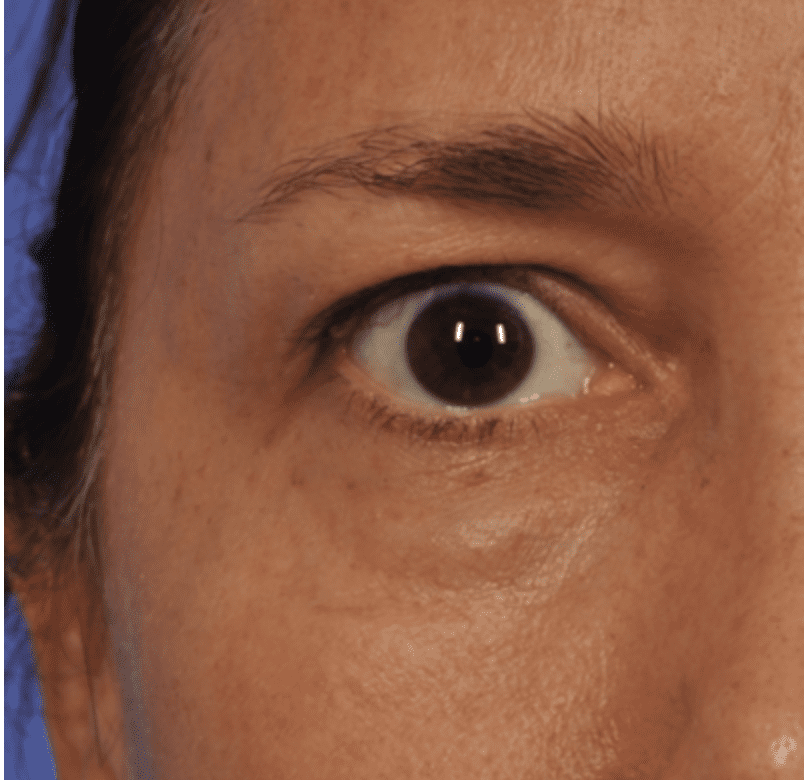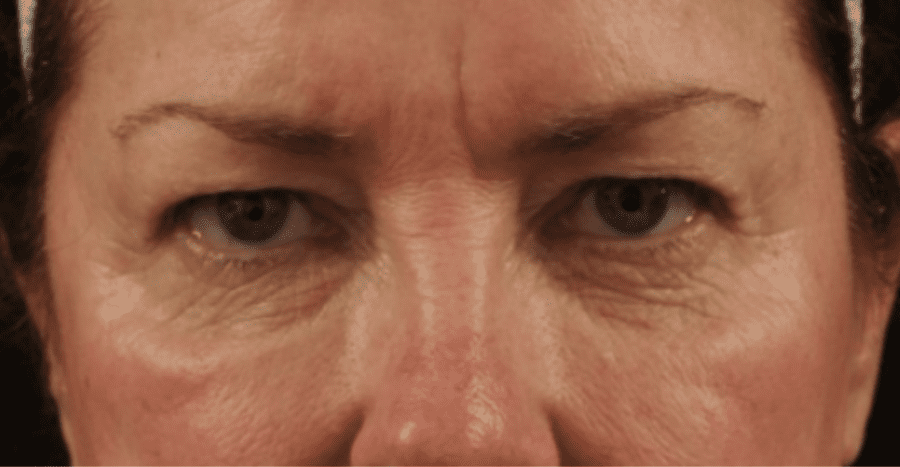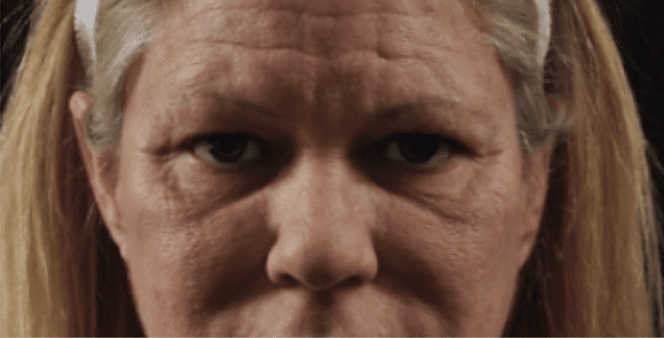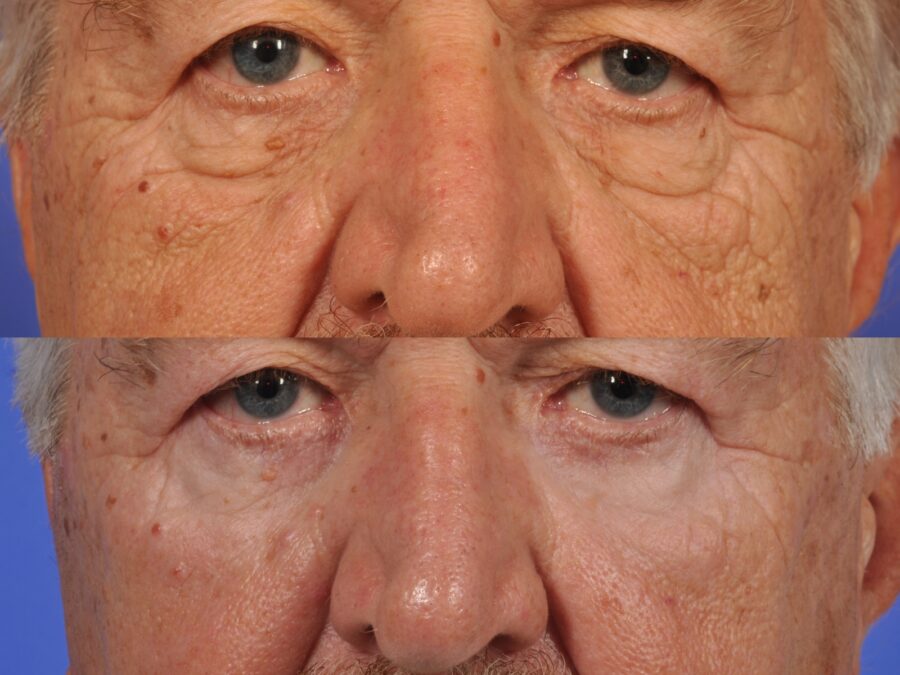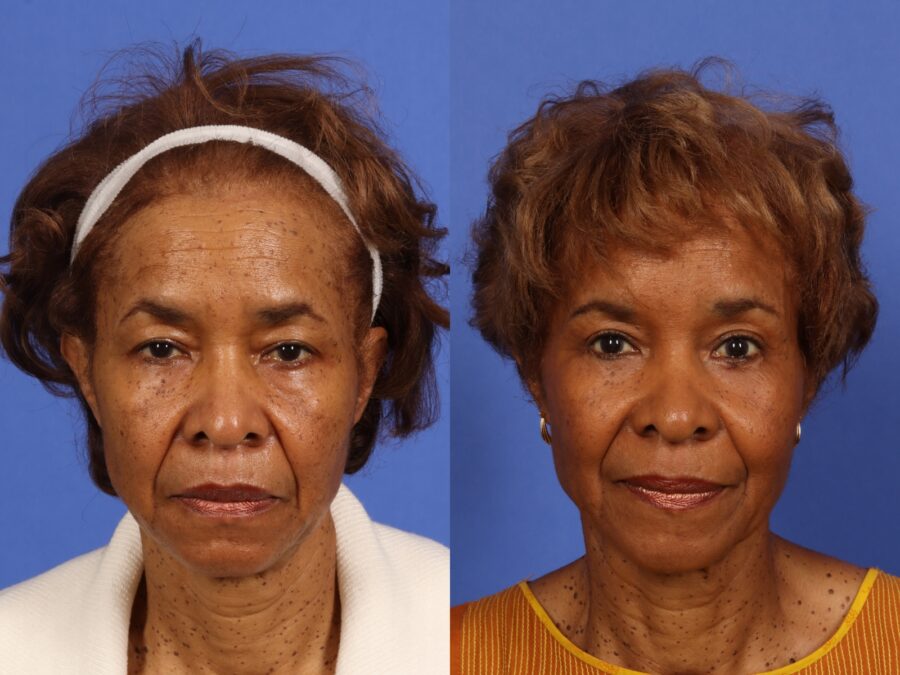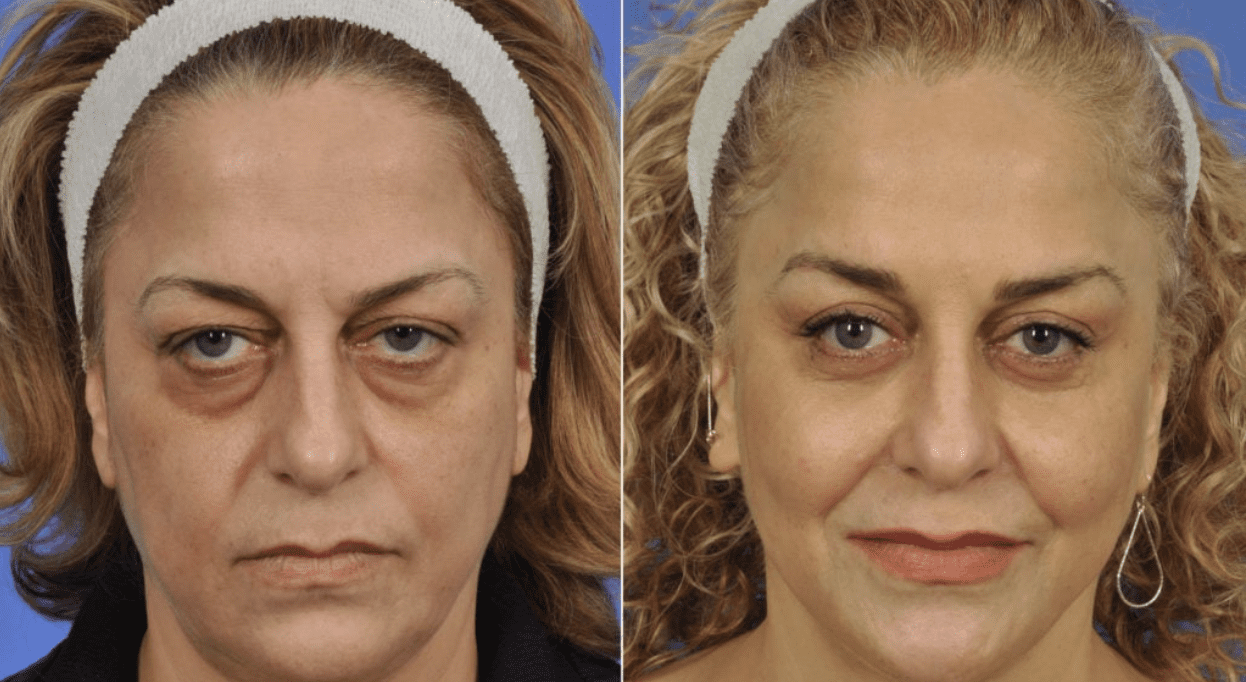
Festoons: What Are They & How Are They Treated?
What are festoons?
In architecture, festoons represent hanging arrangements of flowers, fruit or lights suspended between two points to farm an arc.
In the face, they have come to be known as festoons because they are mounds of hanging skin and associated underlying tissue that appear in the mid cheek area seemingly suspended between the inner and outer eyelids that frame the lid—in a negative way. They don’t look like the normal puffs that almost everyone gets as time goes on in the lower eyelids that make us look tired: these mounds that are low on the cheek are impossible to hide with any conventional concealers.
The edema which can be seen in longstanding cases causes an alteration in pigment that can make festoons darker, brawny and wet appearing. They also do not respond to the conventional types of eyelid surgery, that plastic surgeons perform in their residencies and thereafter, i.e. lower blepharoplasty, where skin and fat are simply removed. They sit too low on the cheek. A facelift does not help them either.
Festoons are the bane to the existence of patients and of the surgeons that treat them. Fortunately, there are solutions that we’ve explored and will address after we discuss what causes them.
What is the cause of festoons?
There are a variety of reasons that people get festoons. When we see festoons in the office, the first part of our discussion revolves around their causes and our first goal is to treat any of these possible underlying conditions:
Thyroid Disease
Imbalances of thyroid hormone, or a previous episode of thyroiditis, can give rise to festoons. In these cases, it is possible that an abnormal mucoprotein created by an immune reaction to thyroid antibodies, can cause swelling of the fat and tissues including the skin. We almost always check thyroid function (high or low) and then check for antibodies in our system with blood work that indicates this immune activity. In these situations we often involve an endocrinologist or your family doctor.
Lid retraction—the white showing above the iris.
Rosacea
Red rosy pink skin is often thought to be a sign of health, but in rosacea, a form of acne, the skin becomes inflamed and red. Flushing of the skin occurs in the cold, after drinking wine or spicy foods and can be exacerbated in the heat and cold. Tiny blood vessels can erupt on the skin of the cheek and nose; the eyelids can become red and crusty, and the skin can erupt with pimply breakouts. Severe cases develop the WC Fields nose with sebaceous proliferation and massive distortions of shape. The edema caused by these disruptions can give rise to festoons.
Rosacea—note the red nose and cheeks.
Sleep Apnea
Poor sleep makes us all appear tired. In sleep apnea, normal breathing patterns are interrupted with periods of apnea—not breathing. With the poor oxygenation of the delicate tissues around the eyes, this swelling becomes exaggerated and may give rise to the malar mounds.
One of the most common treatments for sleep apnea involves the use of a sleep apnea mask. The mask itself can occlude the veins and lymph ducts that drain the eye and make the swelling dramatically worse. Patients that require certain types of masks for treatment of their OAS can sometimes switch to a different type of mask that helps reduce their festoons.
Sleep apnea – exaggerated swelling.
Familial/Congenital
Some people just have a tendency to form festoons. You even see it in their young children. It becomes exaggerated over time. If you have this type of festoon, you know it because you’ve been bothered by it since childhood—and your parents might have been as well.
Filler or Surgery Related
Nowadays, the most common cause of festoons is filler that has been placed in the cheeks and or under the eyes. The most common fillers implicated are all hyaluronic acid fillers such as Juvederm or Voluma . These fillers, while excellent at adding volume to areas that are hollow, often cause edema because they are hydrophilic—water loving—and as such cause intermittent edema , especially at the base of the muscle that closes the eye, the orbicularis oculi, and the swelling can sometimes be so severe as to cause an unhealthy bluish discoloration due to internal reflection of the filler under the skin.
Filler/Surgery Related – Swelling & discoloration.
The kicker to this is that many injectors, doctors nurse and other providers, see a festoon and decide that the hollow underneath the festoon can be treated with a filler. A patient can walk out of an office thinking that their festoons was treated, but a few days later, the condition will either return or, more likely worsen.
We’ve seen these patients come in, resigned to their aging deformity, unaware that the injection they had to improve their cheeks has actually made things worse. And the provider that injected them suggests additional filler. Obviously they are on a course that just continues to deteriorate. They arrive at our office resigned and discouraged.
What are my treatment options for festoons?
Treatment options for festoons depend on the underlying condition. If filler has been introduced into the equation to “help treat the festoons”, our first obligation is to either send the patient back to the provider that injected them to have the filler dissolved, or to dissolve it ourselves. This process, done with an injection of an enzyme that dissolves filler, can take a few treatments based on the type of filler used. Bruising and swelling can occur, but generally the results are instantaneous and the patient with the festoon is back to the way they looked before they sought treatment. In some cases, that treatment alone is enough and patients are brought to tears—literally—because the affliction which they thought would be a lifelong problem improves at the office visit.
In cases of sleep apnea, thyroid disease or rosacea, we begin also by treating the underlying conditions. Initially in all these cases we make sure that the patient is referred to the appropriate specialist.
Once these conditions have stabilized, even if the festoon is still present, we can begin to treat the festoons. If the condition is mask related, we ask the pulmonolgist or ENT sleep specialist to try to find a more effective mask
When possible, we try to avoid surgery.
Radio-frequency Energy
The use of low frequency energy treatments to the skin delivered by an array of tiny needles that penetrate superficially heating the skin surface and underlying tissues—has only been described in one study to address festoons. However, we have compiled a series of more than 90 patients which we have submitted for publication showing improvement in festoons in the vast majority of patients we have treated. The treatment involves 3 to 4 sessions where the skin of the festoon is numbed with a cream and then treated with these needles. Bruising is possible, and the changes occur over a 3-6 month period.
Doxycycline & Tetracycline Injections
Both doxycycline and tetracycline are antibiotics that when injected into or under the skin cause a sclerotic reaction that causes scarring and that may produce contraction and improvement in festoons. These treatments have been the subject of several studies. We perform these injections both in the office and the OR. The office based procedure, we have found, must be performed with some type of sedation, because even with the use local injectable anesthetics, patients have significant pain for about 10 minutes. The sedation reduces and frequently eliminates the discomfort.
The treatment can be repeated if it doesn’t completely resolve the festoon and can be done in conjunction with surgeries as well.
What are my surgical treatment options for festoons?
Here at W Cosmetic Surgery we offer Festoon Surgery; the most common and used technique in our practice involves the use of dual erbium laser resurface. These procedures are performed in the OR with sedation or general anesthesia based on preference. The procedure effectively eliminates the festoon. Patients can go back to work or their families with makeup on about 10 days after the procedure. Rarely a second laser may be necessary in the case of severe festoons.
We often perform laser surgery on festoons in conjunction with surgeries to address other aging changes around the eyes.
These surgeries include lower eyelid blepharoplasty and midface lift. In our practice, the midfacelift is done endoscopically with a technique that we’ve devised and called the WNatural MicromidfaceliftTM.
Will a direct excision ever be recommended?
Since the advent in our practice of laser skin resurfacing, we have not had to resort to direct excision, which involves just taking a knife and just cutting the festoon out. That approach leaves a scar, which, regardless of how well the incision is closed, still can be apparent.
This and other treatment options can be are depicted on our website. We find that seeing a visual is helpful for many patients, so please feel free to take a look at our Festoon Before & After photo album to see some of the success we have had.
I’m interested in treating my festoons, where do I begin?
We would love to help you learn more here at W Cosmetic Surgery. Dr.Allan Wulc is a quadruple certified plastic and cosmetic surgeon with 25+ years of experience and would be pleased to help you achieve your aesthetic goals. Please fill out the form below or call (610) 828- 8880 to schedule a personalized consultation so that we can make sure we find the perfect cosmetic solution for you and your goals. You can also watch the video below of a previous patient, Mary, as she goes through a consultation with Dr. Wulc. This will provide some insight into what you can expect at your consultation.

